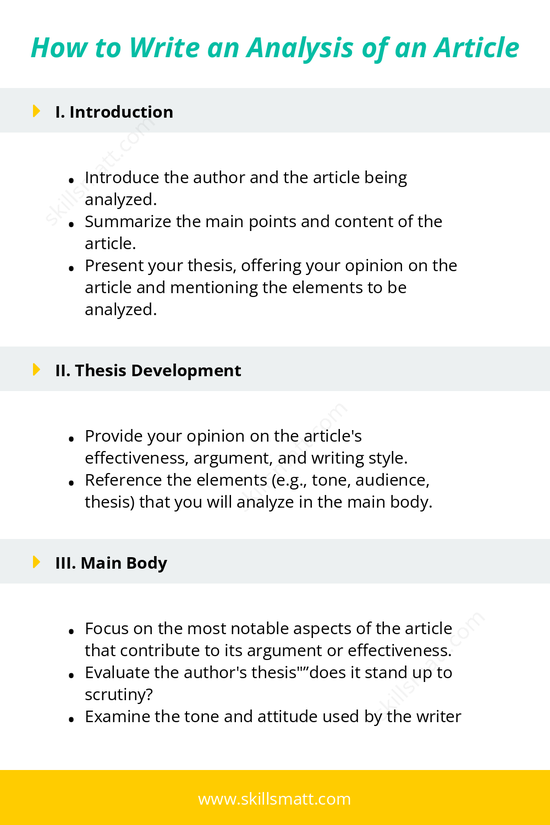How to Write an Analysis of an Article
I. Introduction
- Introduce the author and the article being analyzed: Begin by providing the name of the author and the title of the article.
- Summarize the main points and content of the article: Offer a brief overview of the article’s content and its primary argument or message.
- Present your thesis, offering your opinion on the article and mentioning the elements to be analyzed: State your position on the article and outline the aspects you will evaluate in your analysis.
II. Thesis Development
- Provide your opinion on the article's effectiveness, argument, and writing style: Evaluate the strengths and weaknesses of the article, including its argument and writing style.
- Reference the elements (e.g., tone, audience, thesis) that you will analyze in the main body: Preview the key aspects of the article that you will examine in your analysis.
III. Main Body
- Focus on the most notable aspects of the article that contribute to its argument or effectiveness: Highlight the most significant elements of the article, such as its central thesis or supporting arguments.
- Evaluate the author’s thesis—does it stand up to scrutiny? Analyze the strength and validity of the author's thesis, considering counterarguments if relevant.
- Examine the tone and attitude used by the writer throughout the article: Evaluate how the writer's tone affects the overall effectiveness of the argument.
- Consider the article’s intended audience and how it shapes the argument: Examine how the author tailors their message to a specific audience, and how this impacts the effectiveness of the article.
IV. Conclusion
- Summarize your thoughts on the article's overall impact: Recap your analysis and provide a final evaluation of the article’s overall effectiveness.
- State whether you agree or disagree with the author’s argument and explain why: Conclude by stating your stance on the article and providing justification for your opinion.


